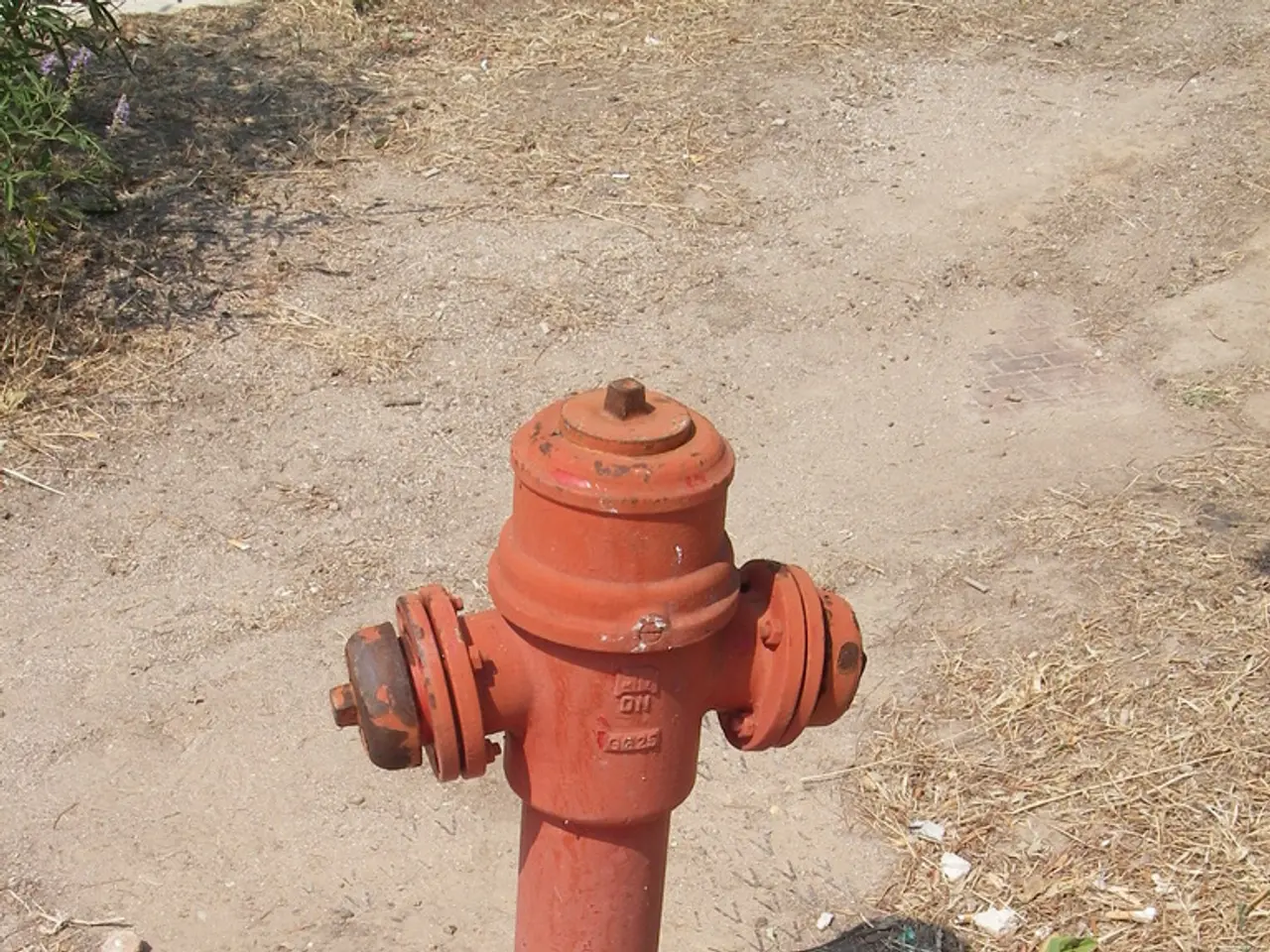Fire Hydrant Surrounding Design: Tips for Landscaping and Safety Precautions in Mind
Firefighters need quick and easy access to a hydrant, and proper landscaping around these essential water sources is crucial. Here are some key guidelines to ensure firefighter accessibility and compliance with fire codes:
Clear Space and Pathways
Maintain a 3-foot radius clear space around the circumference of the fire hydrant, free of any obstructions that could obstruct access or visibility. Additionally, provide a 6-foot-wide path leading directly to the hydrant, with vegetation kept no higher than 4 inches to allow easy and quick access. This path should also have an unobstructed vertical clearance of at least 13 feet 6 inches above any obstruction to accommodate firefighting equipment [1].
Plant Selection
Plant selection around hydrants should favour low-growing, fire-resistant species that do not obstruct view or hinder quick access. Some examples of suitable plants include phlox, vervain, stonecrop, small hostas, astilbe, lamb's ear, sweet alyssum, petunias, celosia, cosmos, marigolds, or impatiens [1]. Taller flowering plants should be kept at least 3 feet away from hydrants, and fast-growing vines should be avoided as they could potentially obstruct a hydrant.
Additional Considerations
An area for a bed should be outlined, considering the location of the hydrant and any nearby structures. Plants with thorns should be kept away from hydrants as they could interfere with firefighters' access. Trees and shrubs should be planted farther away or trimmed appropriately. Creating a bed around a hydrant can eliminate mowing challenges and make the hydrant more aesthetically pleasing. A groundcover, preferably a steppable one, can be a simple solution for the area around a hydrant.
Safety Measures
It's important to maintain 18 inches (46cm) of vertical clearance from the base of the hydrant to the middle of the large cap on the side. Never paint a fire hydrant, as it could make it difficult for firefighters to identify the hydrant in an emergency. A rubber tubing edge for the bed is suggested instead of rocks to avoid tripping hazards for firefighters.
Local Guidelines
Municipalities and fire departments have rules for fire hydrant landscaping, so it's essential to contact your local fire department for specific guidelines. Some departments might recommend specific plants to avoid near hydrants due to their growth patterns. In some cases, local fire departments may have the authority to approve any variations or adaptations on a case-by-case basis.
Conclusion
By following these guidelines, you can help ensure firefighter safety and rapid response capability. A well-landscaped area around a fire hydrant can also make the hydrant more aesthetically pleasing and easier to maintain. Always consult with your local fire department for specific guidelines and recommendations.
[1] Kitsap County's development and fire code regulations.




